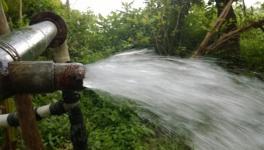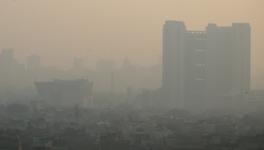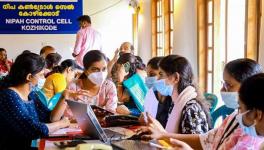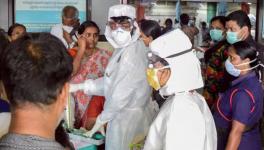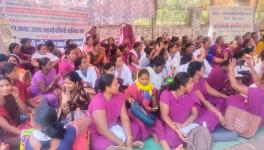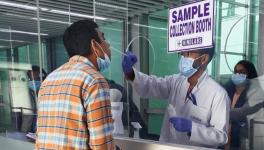Nationwide Sample Survey on Snakebite Cases to Begin in February
Rom Whitaker with Sumatran spitting cobra. Kalimantan. Photo Credit: Mr Romulus Whitaker.
A sample survey funded by the Indian Council of Medical Research (ICMR) will take place in Kerala next month to collect data about cases of snakebite and related issues like economic losses due to them. The first phase will see 14 states being surveyed while the second will encompass the rest after a six-month period.
Dr. Jaideep C. Menon from Kerala, a noted expert and member of the National Task Committee on Venoms and Toxins, and Omesh Bharti, the Padma Shri awardee field epidemiologist, will be the principal investigators heading a 90-member team.
Menon said that the survey was due to begin in March last year but was held up due to COVID-19. “Even now Accredited Social Health Activist (ASHA) workers are busy with the national vaccination program so we are gearing up to start the survey in some parts of Kerala by next February,” he said.
“We have selected two sampling areas – an elevated area and a plain – in every district in these states where the local ASHA workers will collect information on snakebite cases. We will know if the patient went to a quack or a hospital, the kind of treatment, the extent of morbidities etc. A comprehensive report will then be submitted to the ICMR,” said Bharti.
About six months ago, the findings of the Million Death Study, conducted by the Centre for Global Health Research (CGHR) at the University of Toronto, Canada revealed that about 1.2 million snakebite deaths occured in India during between 2000 and 2019, an average of 58,000 per year. This unfortunately reinstated India’s position as snake bite capital of the world. “Since the Million Death Study findings are based on verbal autopsies, ICMR has approved this new survey to collect real-time data on snakebites across the country,” said Bharti.
“The Million Death Study provided numbers about mortality due to snakebite which opened policy makers’ eyes to the enormity of the situation. Our study will provide detail related to the extent of morbidity as well as the socio-economic status of the victims. Most of the snakebite cases occur in rural parts of the country where usually the male – like farmers or labourers – who is the bread-winner of the family, become targets. The purpose of the sample survey is not only to provide authentic data collected from communities but also to help policy makers take up concrete measures to deal with this alarming situation,” he added.
In April 2009, snakebite was added to the WHO’s list of ‘neglected tropical diseases’ and the organisation came up with a strategy for the prevention and control of snakebites, aiming to halve the numbers of deaths and serious disabilities by 2030. However, the Centre has not yet declared snakebite a disease, a demand raised by many experts and scientists for long.
Gerry Martin, noted Mysuru-based herpetologist and biologist, said: “The primary reason for such a high number of deaths, in my view, is that most people are not able to access proper medical care and fall into the trap of quacks who claim to be able to treat snakebite. These quacks are all fraudulent. Secondly, Primary Health Centres aren’t equipped to deal with snakebite. Time is the biggest challenge when dealing with venom and too much of it is wasted before one gets proper treatment,” he added.
World-renowned herpetologist, conservationist and founder of the Madras Snake Park, Romulus Whitaker, also listed many reasons for snake caused-mortality or morbidity. He said there is a high presence of of snake species of medical importance in agricultural areas, inadequate distribution/availability/publicity of anti-venom serum (AVS), walking at night without lights, adequate footwear or sleeping on ground mats, lack of widely disseminated, standardised first-aid and treatment protocols, geographic variation in venom composition, lack of knowledge about snake habits and behaviour and the inadequate training of clinicians in dealing with snakebite.
Of the 285 species of snakes found in India, the big four – spectacled cobra (Naja naja), Russell’s viper (Daboia russelii), common krait (Bungarus caeruleus), and saw-scaled viper (Echis carinatus) – are considered most life-threatening. There are four species of cobras, eight species of kraits and two subspecies of saw-scaled vipers, all of which are capable of a fatal bite in defence.
Whitaker told NewsClick that it had been found that “antivenom produced from the venom of the ‘big four’ snakes, mainly sourced from Irula Snake Catchers Industrial Cooperative Society Cooperative in Tamil Nadu, may not effectively neutralise a bite from any member of the ‘big four’ and other toxic species found in other parts of the country. Therefore, it would be advantageous to have more cooperative activities in other parts of the country which will financially support snake-catching communities and will be a big step forward in using other species of snakes to create anti-venom which will address the complex and life-threatening problem of regional venom variation. However, the standards of venom production and protocols of the cooperative needs to be improved in conformity with WHO guidelines”.
“Keeping the astronomical prices which buyers have to pay to purchase venom in mind, it will be advantageous to ascertain exactly how much venom is required to produce an adequate quantity of AVS for India and, accordingly protocols can be worked out,” he added.
He cited an example of buyers who wished to purchase only krait or saw-scaled viper venom, the price of which is an astronomical $3,888 per gram in India. Antivenom producers have expressed concern over the high venom prices and the purchase of Irula Cooperative venom dropped considerably in 2010. In comparison, price for Indian snake venom produced in the US is around $150 per gram for the spectacled cobra, $600 for Russell’s viper and $400 for the saw-scaled viper.
Sumanth Madhav, project manager (wildlife) at the Humane Society International, said that since snakebite was a “poor persons disease, the government must cap venom prices. There is also a huge debate about the quality of venom used. Sub-standard venom will produce poor quality anti-venom. We have been asking for a quality check as per WHO guidelines, which are yet to be met. There is big mismatch between demand and supply also. Venom is available in metros like Bengaluru and Delhi, not due to the frequency of cases but for better distribution facilities. Taking undue advantage of this situation, some people procure, stock up and sell AVS at higher prices in rural areas. For instance, an AVS vial was found being sold at Rs 3,000 instead of the standard price of Rs 600 in metros; its robbery,” he added.
Whitaker recommended that state and central government health agencies ensure wider availability of antivenom on a subsidised or for free for the rural poor via primary health centres and other rural health facilities.
Madhav was critical of the attitude of bureaucrats in most states. “It takes two to three years to seek permission even to extract one gram of poison from a snake as sample for research work. Bureaucrats think that snake poison will be extracted in large quantities worth millions of dollars. Their apprehension stems from the information in the media of some gangs being nabbed with bottles full of so-called venom with sky-high prices. In reality, to fill even a one litre bottle, it will require venom from lakhs of snakes, which is not possible. Even a big snake gives few drops of venom at a given time. So the lies and myths propagated by some anti-social elements have to busted,” he added.
“Even if researchers in India are funded by international agencies, it will go in vain if one does not get permission from the state or central agencies,” he added.
Madhav and Kartik Sunagar, an assistant professor at the Indian Institute of Science in Bengaluru are conducting research to prepare a new generation of anti-venom. The latter was earlier part of a study which evaluated how commercial Indian antivenom was ineffective in treating snakebites from the neglected but medically-important species.
“I am sampling snake poison from a bio-geographic perspective. New generation antivenom can be made in culture plates in labs, for which we don’t need immunisation of horses/mules or ponies. We can rely on mammals cells which can grow in large numbers,” he said.
However, he added that there was a need for change in policies around snakebites. “A company bids to manufacture and sell the AVS having made the lowest bid in the auction, for a period of two years. However licenses should be given on a performance-basis,” he said.
In comparison to human-wildlife conflict cases, where compensation and policies are much better placed, it is not the same in snakebite cases where the morbildity rate is much higher. Madhav reasoned that since snakes were not as magnetic as tigers or elephants and that their victims were usually poor, despite the “alarming” number of deaths, the highest in the world, policy makers are not serious about them. The ICMR has issued guidelines for snakebite treatment but those are not followed in letter and spirit by doctors.
He recommended that there should be regional centers to extract venom from snakes held in captivity. He added that it would require the coordination of multiple departments – like forest and health – to work together.
Poor medical facilities and inadequate training imparted to doctors in rural areas is another aspect which needs urgent attention. Volunteers like Dr. Dayal Bandhu Mazumdar, a West Bengal-based ophthalmologist, is training such doctors on his own. “We have started our own training module for doctors. The doctors working in corporate hospitals do not come since cases are largely related to the poor and rural people,” he added.
“The treatment for snakebite-induced poison is not a part of the MBBS curriculum. It is taught to doctors studying forensic science. This knowledge comes in handy only to conduct autopsies. Therefore, in my bid to help fellow doctors working in rural areas who have to treat all sorts of patients, I have formed a WhatsApp group where hundreds of doctors from 16 states are members. They share their problems and receive solution-based feedback from experts in this group. I also travel widely to give field training to the doctors.”
The writer is a Chandigarh-based independent journalist who writes on the environment, climate change, wildlife, social and gender issues.
Get the latest reports & analysis with people's perspective on Protests, movements & deep analytical videos, discussions of the current affairs in your Telegram app. Subscribe to NewsClick's Telegram channel & get Real-Time updates on stories, as they get published on our website.










